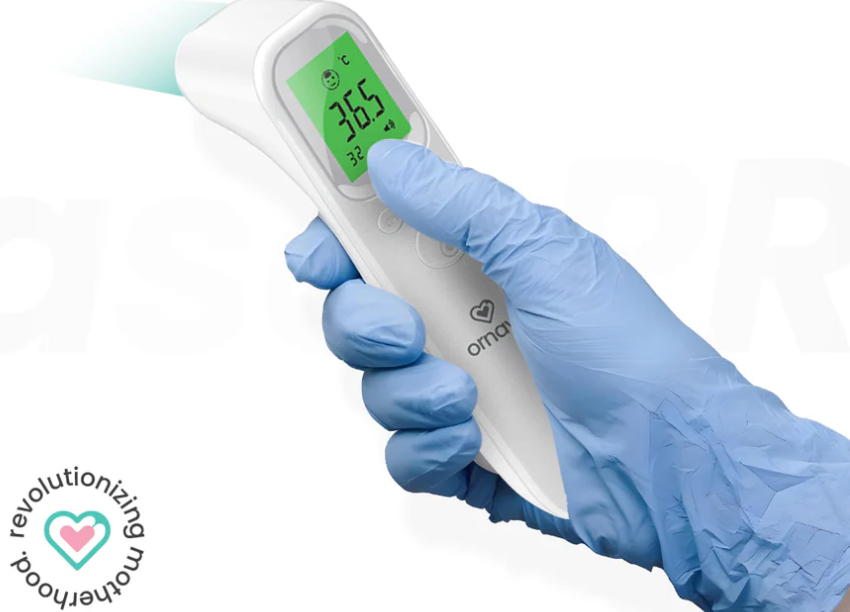Find out what to look for when choosing an Infrared Thermometer

Strong 8k brings an ultra-HD IPTV experience to your living room and your pocket.
Infrared thermometers have become an essential tool in various fields, from medical diagnostics to industrial applications. They provide a quick and non-contact way to measure temperatures accurately. However, with so many options on the market, it can be challenging to choose the right one. This guide will help you understand what to look for when selecting an infrared thermometer and how to ensure you're making the best purchase for your needs.
How Infrared Thermometers Work
Infrared thermometer measure temperature by detecting infrared radiation emitted by an object or surface. These thermometers do not require direct contact, making them ideal for situations where traditional thermometers may not be suitable.
Key Working Principles:
The device captures infrared energy emitted by an object.
It converts the energy into an electrical signal.
The signal is then processed and displayed as a temperature reading.
Key Features to Consider
When choosing an thermometer, it's important to assess specific features to ensure accurate and efficient temperature readings. Below are the most critical aspects to consider:
1. Accuracy and Precision
Accuracy is one of the most important factors when selecting an thermometer. Look for models with a margin of error of ±1°C (or ±2°F) or lower for reliable readings.
2. Temperature Range
Different models have varying temperature ranges. Ensure that the thermometer you choose covers the required temperature spectrum for your intended use. For example:
Medical infrared thermometers: Typically range between 32°C to 42°C (89.6°F to 107.6°F).
Industrial infrared thermometers: Can measure from -50°C to 1000°C (-58°F to 1832°F) or more.
Kitchen infrared thermometers: Generally range between -50°C to 300°C (-58°F to 572°F).
3. Response Time
A good infrared thermometer should provide instant readings. Most quality devices have a response time of less than one second.
4. Emissivity Settings
Emissivity refers to the ability of a material to emit infrared radiation. Some infrared thermometers come with adjustable emissivity settings, allowing more accurate readings across different surfaces.
5. Display and Backlight
A clear LCD display with a backlight is crucial for reading temperatures in dimly lit environments. Some advanced models even include a color-coded indicator for easy interpretation.
6. Battery Life and Power Options
Consider models with long battery life or rechargeable options. Some thermometers are powered by standard AAA or AA batteries, while others have built-in rechargeable lithium-ion batteries.
Types of Infrared Thermometers
Thermometers are categorized based on their application. Understanding these types will help you choose the right one for your needs.
1. Medical Thermometers
These are designed to measure body temperature without physical contact. They are commonly used in hospitals, clinics, and homes for fever detection.
2. Industrial Thermometers
Used in manufacturing, HVAC systems, and electrical inspections, these thermometers can measure extreme temperatures.
3. Kitchen Thermometers
Ideal for cooking, baking, and food safety, these thermometers help monitor food temperature without contamination.
How to Use an Infrared Thermometer Correctly
Read the Manual – Understand the specific instructions for your model.
Select the Right Setting – Choose the appropriate mode based on what you're measuring.
Maintain Proper Distance – Follow the manufacturer’s recommended distance for accurate results.
Ensure a Clean Lens – Dirt or smudges can interfere with readings.
Avoid Measuring Through Glass or Steam – These can distort infrared readings.
Common Mistakes to Avoid
Holding the Thermometer Too Close or Too Far: This affects accuracy.
Measuring Reflective Surfaces Without Adjustments: Use models with emissivity settings.
Ignoring Environmental Factors: Avoid using infrared thermometers in extreme weather conditions.
Not Calibrating Regularly: Calibration ensures long-term accuracy.
FAQ's
Can infrared thermometers be used for humans and objects?
Yes, but make sure to select a model designed for both applications or one specifically for medical use.
How do I know if an infrared thermometer is accurate?
Compare readings with a standard thermometer and ensure the device is calibrated.
Do infrared thermometers work in cold or hot environments?
Yes, but extreme weather conditions may affect performance. Always follow the manufacturer’s guidelines.
Can I use an infrared thermometer on liquids?
Yes, but the reading may be less accurate due to reflection. Stirring the liquid can help.
What is the ideal distance for using an infrared thermometer?
Most models work best within 1 to 5 inches from the target, but check the manual for specifics.
Conclusion
Choosing the right infrared thermometer requires careful consideration of features like accuracy, temperature range, emissivity settings, and display quality. Whether you need one for medical, industrial, or kitchen use, understanding how these thermometers work and how to use them correctly ensures you get the most accurate readings. By avoiding common mistakes and following best practices, you can make an informed decision and select the perfect thermometer for your needs.
Note: IndiBlogHub features both user-submitted and editorial content. We do not verify third-party contributions. Read our Disclaimer and Privacy Policyfor details.


